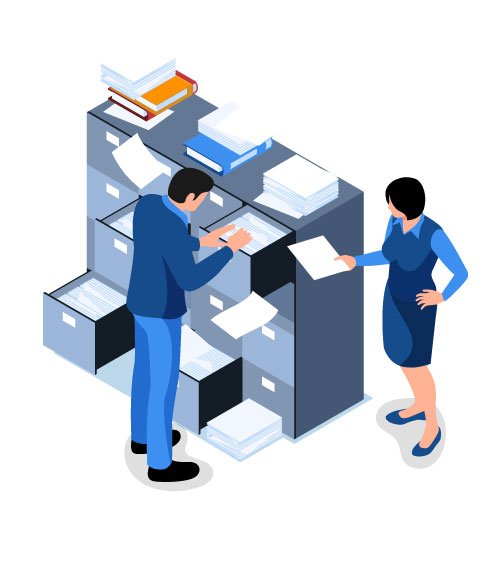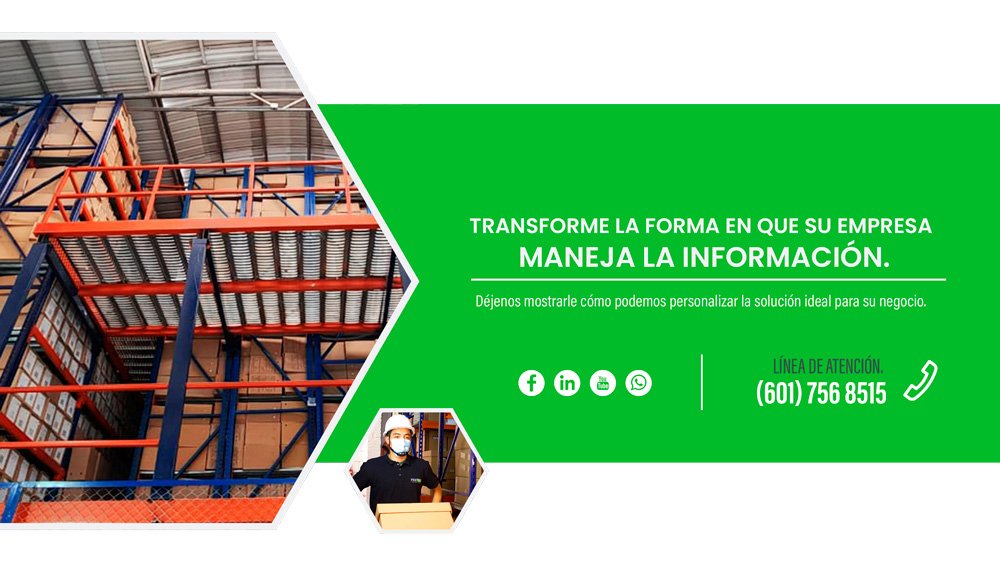What is Document Management?
What is Document Management? Document management refers to the set of practices and technologies used to create, capture, store, manage, and access documents and records within an organization. This process involves not only managing physical documents but also handling digital documents, ensuring their accessibility, security, and compliance with legal regulations, so they can be used in a timely, efficient, and effective manner.
It is important to highlight the concept of electronic document management, from which the new types of documents generated by organizations arise, due to the implementation of new technologies.
Electronic document management is the application of information and communication technologies (ICT) to the document management process. This allows organizations to automate many tasks related to document management, such as creation, storage, retrieval, distribution, and disposal.
"Electronic document management can help organizations improve their efficiency, productivity, and cost reduction."
With the development of technology, the tools used in document management have evolved. Currently, the most commonly used tools are as follows:
- Document Management Systems (DMS): Document management systems (DMS) are software solutions that automate tasks related to document management.
- Document Management Systems (DMS) are the most important tools used in electronic document management. DMS allow the automation of tasks related to document management, such as creation, storage, retrieval, distribution, and disposal of documents. This enables organizations to improve their efficiency, productivity, and transparency.
- Search Tools: Search tools are used to find information within databases
- Visualization Tools: Visualization tools are used to represent information graphically.

Document management systems (DMS) are the most important tools used in electronic document management. DMS allow the automation of tasks related to document management, such as creation, storage, retrieval, distribution, and disposal of documents. This enables organizations to improve their efficiency, productivity, and transparency.
What is Document Management? Exploring Its Importance for Businesses
Document management plays a vital role in the operational efficiency of an organization. Below are some key reasons why it is important:
Operational Efficiency
Document management leads to significant improvements in an organization’s operational efficiency. By having an organized document system, accessing information becomes easier, which accelerates internal processes and improves decision-making. According to various studies, efficient document management can reduce document search time by up to 80%, resulting in considerable time and resource savings.
Regulatory Compliance
Compliance with legal regulations is another critical aspect. In many countries, there are specific laws that regulate how documents, especially those containing sensitive or confidential information, must be managed. For example, in Colombia, Law 594 of 2000 establishes clear guidelines for document management, ensuring that organizations keep their records organized and accessible.
Preservation of Institutional Memory
The preservation of institutional memory is essential to maintain the history and legacy of an organization. Documents not only have operational value but also historical and cultural significance. By properly managing documents, organizations can ensure that this information remains available for future generations and historical studies.
What is Document Management? And What Are the Key Components that Make It Up?
Document Lifecycle
Document management covers the entire lifecycle of documents, from creation to final disposition. This lifecycle can be divided into several stages:
Creation and Capture
Documents can be created either physically or digitally. Once created, documents must be captured and stored securely. At this stage, it is crucial to establish clear policies on who can create documents and how they should be labeled and stored.
Use and Maintenance
Once captured, documents enter the use and maintenance phase. During this stage, documents are regularly used by employees to carry out various tasks. It is essential to maintain a control system that ensures documents are accessible only to authorized individuals and are kept up-to-date.
Preservation and Archiving
In this stage, documents that are no longer frequently used but must be kept for legal or historical reasons are transferred to an archive. Here, long-term preservation is ensured, and measures are taken to protect them from deterioration or loss.
Final Disposition
Finally, documents that no longer have operational, legal, or historical value can be securely disposed of. This process must be carried out according to current policies and regulations to ensure that no important information is lost or confidentiality is compromised.
What is Document Management? And What Are the Most Common Technologies?
The use of advanced technologies is essential for efficient document management. Some of the most common technologies include:
-
1. Document Management Systems (DMS)
Document Management Systems (DMS) are digital platforms that allow for efficient storage, organization, and management of documents. These systems offer features such as advanced search, version control, and access management, making it easier to handle large volumes of information.
-

2. Digitization and Automation
The digitization of physical documents and process automation are key trends in modern document management. Digitization allows physical documents to be converted into digital formats, facilitating their storage and access. On the other hand, automating processes such as workflows and document approval reduces administrative burdens and minimizes human errors.
-
3. Security and Compliance
Security is a vital aspect of document management. Systems must have robust measures in place to protect information against unauthorized access, loss, and security breaches. This includes the use of encryption, multi-factor authentication, and regular audits. Moreover, it is crucial for document management systems to comply with relevant laws and regulations.
Implementing Document Management in Organizations

Needs Analysis
The first step in implementing a document management system is to conduct a detailed analysis of the organization’s needs. This includes identifying the types of documents handled, existing workflows, and the legal and regulatory requirements that must be met. This analysis helps design a system that fits the specific needs of the organization.
Software Selection
Once the needs are analyzed, the next step is selecting the appropriate software. It’s important to choose a solution that offers the necessary features, is scalable, secure, and compatible with other systems within the organization. Additionally, the ease of use and the provider’s technical support capabilities should be considered.
Training and Change Management
Implementing a document management system requires proper employee training and effective change management. It’s essential that all staff members understand how to use the new system and the associated document management policies. This can be achieved through training sessions, user manuals, and ongoing support.
Monitoring and Continuous Improvement
Document management is not a static process; it requires monitoring and continuous improvement. It is essential to establish metrics to evaluate system performance and conduct regular audits to ensure compliance with policies and regulations. Additionally, opportunities for improvement should be identified, and the system should be updated as necessary.

If you're interested in learning more, PROTECH INGENIERIA is here to help you.
We offer strategic solutions to improve efficiency, reduce operational costs, and optimize your business processes.
Contact Us Now!Frequently Asked Questions (FAQs)
What is Document Management and why is it important?
Document management is the set of administrative and technical activities that enable the organization, storage, access, and final disposal of documents within an organization. It is important because it improves operational efficiency, ensures regulatory compliance, and preserves institutional memory.
What are the main components of a document management system?
The main components include the document lifecycle (creation, use, maintenance, conservation, and final disposal), technologies like Document Management Systems (DMS), digitization and automation, as well as security and compliance measures.
What are the main challenges in implementing document management?
Some of the main challenges include resistance to change from staff, information security, and regulatory compliance. It is essential to have a change management plan, implement robust security measures, and ensure compliance with applicable laws and regulations.
Conclusion
In summary, document management is a critical component for the efficiency and competitiveness of any organization. From capture and storage to management and distribution, every stage of the process is crucial to ensuring that information is organized, accessible, and secure. Implementing a document management system not only improves productivity and reduces costs, but also ensures regulatory compliance and protects sensitive information. For businesses looking to enhance their operations and remain competitive, investing in a document management solution is an indispensable strategic decision.







